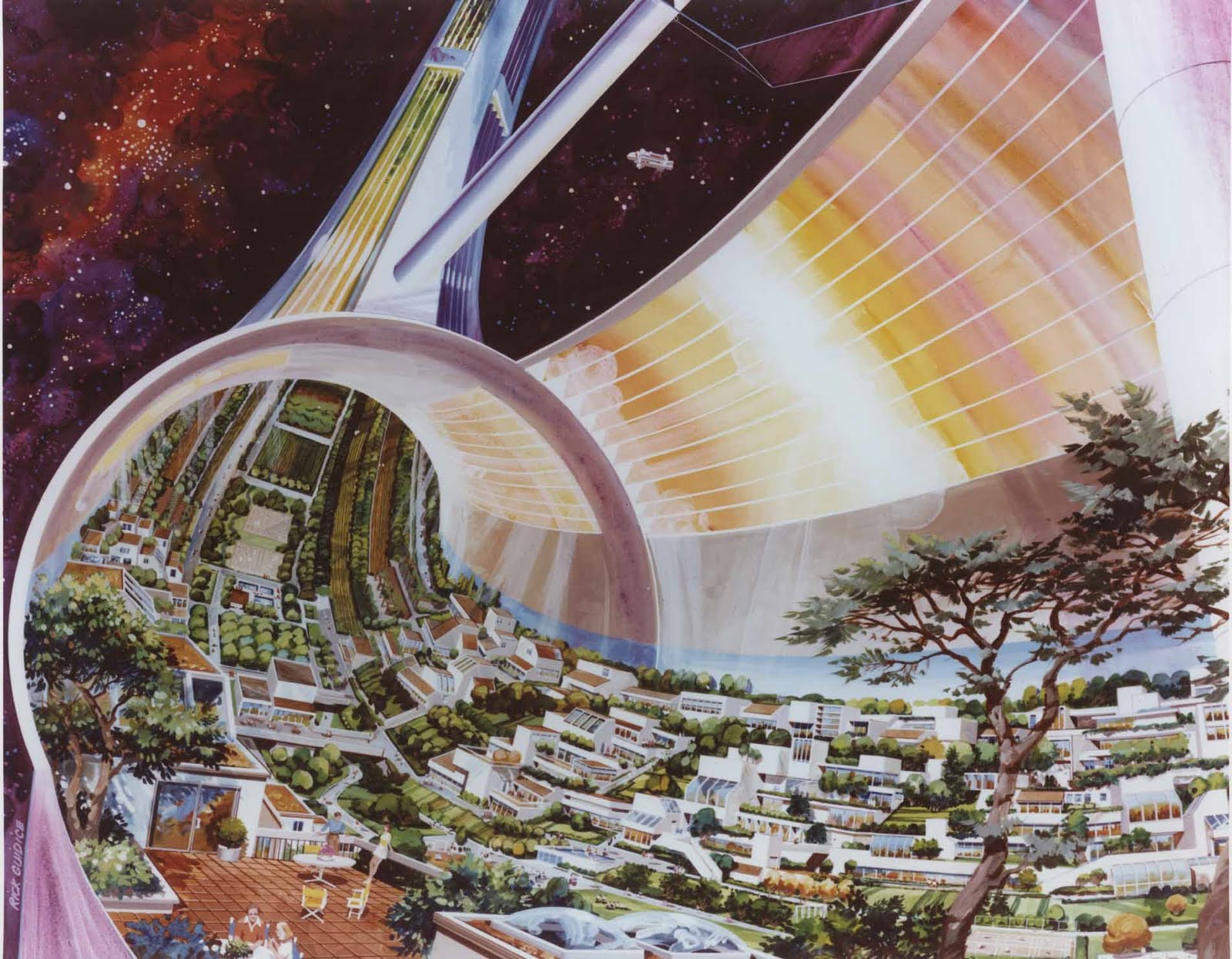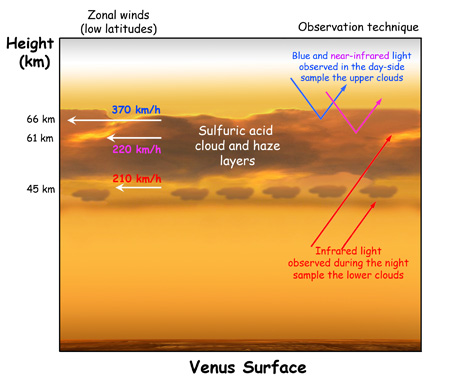New Mars Forums
You are not logged in.
- Topics: Active | Unanswered
Announcement
#1 2015-08-31 10:30:29
- Tom Kalbfus
- Banned
- Registered: 2006-08-16
- Posts: 4,401
Track-Ring habitats around gravitational bodies.
This would fall under the category or para-terraforming, or very large scale O'Neill habitats. We'll start with the Moon, since it is an airless body.
The Moon has an equatorial diameter of 3476 km, it already is the same distance as the Earth from the Sun, and is the second largest body in the Solar System that sits squarely within the Sun's habitable zone, the Earth being the largest. As such we don't have to worry about gathering additional light or blocking too much light as we do about other bodies to terraform. Two major problems with the Moon is that it is too small, and it rotates too slowly! Its surface area is about the same as Africa, which is the second largest continent after Asia!

Lets consider wrapping something like a Stamford Torus around the Moon, only we don't rotate it for gravity, but only to give it 24-hour diurnal period, as the Moon rotates too slow, and lets start near the Moon's North Pole to make it easy to build. The track follows a Lunar line of latitude, in other words it keeps a constant distance from the Moon's North pole, the curvature of the ring is positive, not negative as in the Stamford Torus, but like the Stamford Torus it has a vaulted ceiling to hold in air. Now lets spin this ring as a modest velocity relative to the Moon's Surface of 100 km/hour such that it does a complete circuit around the Moon's north Pole in 24 hours. This means that the circumference of the track would have to be 2400 km. Since Diameter times Pi equals circumference we divide 2400 by Pi to get a diameter of 763.94 km as measured through the Moon, not along its surface. The track would have to be level and graded, it could be wheels on rails rather than maglev at this point. As I just mentioned the maximum diameter of the Moon is 3476 km we divide 763.94 by 3476 to get a decimal 0.2198 the cosine of a certain angle from the equator is 0.2198, so we need to take its inverse cosine to get the degrees latitude. That is 77.30 degrees North of the equator So we build a level track along the latitude line of 77.30 degrees North, and we lay down the rails. The question is how wide to make the ring. Lets allocate a Hectare of land for each family residence to be generous, lets place a road down the center, the road will be 20 meters wide. A hectare is 10,000 square meters, thus a field that is 100 meters square is a Hectare, so lets place a Hectare width or 100 meters to the right of the road and another Hectare plot to the left of the road, the total width of the ring is therefore 220 meters wide, the circumference is 2,400,000 meters, therefore there are 48,000 1 Hectare plots within the ring separated by a 20 meter wide road. I'd say make the vaulting ceiling 110 meters high at its apex, below the surface of the ground there will be 110 meters of subsurface in the center, somewhere at the bottom are wheels on rails in the vacuum of space, the number of wheels is redundant, in other words we have more than we need to support the habitable rings, wheels can be retracted upwards from the rails while other wheels bear the weight of the ring on the track as the rings continue to rotate around once every 24 hours. The ceiling above is transparent to let in Sunlight. At a latitude of 77.30 degrees North, the Sun will appear to rise in the east as the ring makes its journey around the Moon, and will reach a maximum height of 12.7 degrees above the Southern horizon +/- 5.145 degrees due to the orbital inclination and thus the axial tilt of the Moon relative to the Ecliptic around the Sun. During the Summer, the Sun will rise as high as 17.845 degrees above the Southern Horizon, but during the Winter it will rise only 7.555 degrees above the horizon and the days will be correspondingly longer or shorter. From here we can work our way inward toward the Pole, for instance building a parallel track on Level ground at 77.31 degrees North (which is 3 km to the north of the outer ring), a Suspension or arch bridge can connect the two rings at, then by leveling the ground between and constructing bridges that connect the two rings at intervals of 1 degree or 6.667 km each along the outer ring, the inner one moving slower relative to the ground so that it is in sync with the rotation rate of the ring that is further out. As we move outward ring will have to travel faster and faster to keep up with the 24 hour rotation rate. At the equator, the velocity will be 455 km/hour, I believe some high speed trains can travel that fast, this is 284.375 miles per hour, I believe wheels on rails can achieve that speed. as oppose to some maglev mechanism. What do you think of this idea?
Offline
Like button can go here
#2 2015-08-31 11:59:16
- Tom Kalbfus
- Banned
- Registered: 2006-08-16
- Posts: 4,401
Re: Track-Ring habitats around gravitational bodies.
Continuing this idea with Venus, who's equatorial diameter is 12104 We could have an airship habitat traveling at 100 km/hour in a 2400 km circle, the diameter is 763.94 km, we divide this by the diameter of Venus which is 12104 km to get 0.06311 we take the inverse cosine to get 86.38 degrees North, the airship would follow a circle in the westward direction and hopefully the circle is wide enough to get a complete sunset every 24 hours. If we want to travel at 455 km/hour
This is a diagram of the zonal winds, not sure how fast these are near the poles, but if we can travel at 455 km/hour, in an airplane most likely rather than an airship, then we will need to circumscribe a circle 10920 km in circumference, the diameter would be 3476 km, this is 0.2872 of Venus' diameter which would correspond to 73.31 degrees South or North.
Offline
Like button can go here
#3 2015-09-01 02:07:00
- Antius
- Member
- From: Cumbria, UK
- Registered: 2007-05-22
- Posts: 1,003
Re: Track-Ring habitats around gravitational bodies.
Interesting idea. To avoid single point failure, it would be wise to segment the habitat into a large number of carriages.
In a similar vein of thinking, one could mount a smaller colony on tracks and run it along roads or predetermined routes on the lunar surface. If it followed the sun it would have constant solar energy and would not suffer the 14 day night. Such a habitat could be established relatively soon. It could dump waste heat into lunar soil which would be scooped from piles along the road and then redeposited. A backup RTG would provide emergency power if the base fell behind the terminator.
As the number of habitats increased they would be coupled together into trains. Eventually, the train would circle the entire globe.
Last edited by Antius (2015-09-01 02:12:51)
Offline
Like button can go here
#4 2015-09-01 05:45:55
- Tom Kalbfus
- Banned
- Registered: 2006-08-16
- Posts: 4,401
Re: Track-Ring habitats around gravitational bodies.
Well if you could lay down the tracks, you could also lay down solar panels on either side of that track, Since half of those solar panels would be in sunlight, they would always draw power, you could feed the electricity to the tracks to power an electric train, by shading the power lines and insulating them from the ground, they could be superconducting and deliver power without loss to any point on the track whether in daylight or in darkness.
Last edited by Tom Kalbfus (2015-09-01 05:46:55)
Offline
Like button can go here